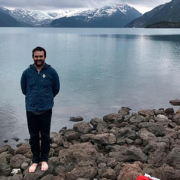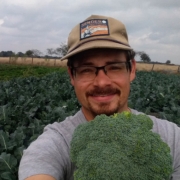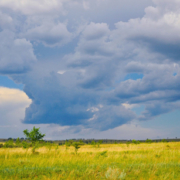Payments for Ecosystem Services
 Print This Post
Print This Post
By Colin Mitchell, NCAT Sustainable Agriculture Specialist
My passion for working in sustainable agriculture came out of a love of being in nature with friends, whether it was going on back-country backpacking trips, kayaking Texas’s beautiful rivers, mountain biking, or sometimes escaping to nature for my own enjoyment and, at times, solace. After college, I decided to end my pursuit of a career as environmental lawyer and I had taken a few classes focused on sustainability, agriculture, and the environment. Since I loved working hard outside, I decided to give sustainable agriculture a try.
Farming had skipped a generation in my family; the farm my grandfather grew up on in North Dakota had burned down when he was young. I saved up from working at my local outdoor shop and took off to Australia to live in a tent and complete a 10-month-long internship at the Permaculture Research Institute. I was hooked and wanted to devote my career to sustainable agriculture with the goal of supporting the production of nutrient-dense food, healing the environment, revitalizing rural and urban communities, and mitigating climate change. When I returned from Australia, I lived in my truck off and on, working on sustainable farms in California, Oregon, and Texas and managing a few sustainable agriculture projects. I was eventually hired by NCAT, which has been an amazing experience and a workplace that supports the same goals I have.
Two Sides of the Climate and Agriculture Coin
The linkage between climate and agriculture sure has been getting a lot of attention lately. It was even brought up briefly during one of the 2020 Democratic primary debates. The attention is two-sided. One side of the coin is the attention industrialized agriculture receives for contributing to climate change and environmental degradation like algae blooms and destroyed animal habitat. The other side of the coin is the interest in economic tools to reward sustainable and regenerative farmers and ranchers for sequestering carbon, improving water quality, conserving wildlife habitat, and the health of the environment in general. There are tons of challenges facing farmers who are wanting to adopt sustainable agriculture practices: land access, time and money for education, and, primarily, the cost of transitioning to sustainable practices. So, paying farmers and ranchers for improving the environment while producing food seems like it could be a pretty good idea.
There has been a recent surge in the development of programs to encourage farmers and ranchers to help mitigate climate change and improve environmental quality by paying them to adopt sustainable agriculture practices. Corporations and governments are paying farmers and ranchers for their maintenance or improvement of ecosystem services, or the benefits society gains from healthy, functioning ecosystems. Ecosystem services include climate regulation, pollination, the production of food, the water and nutrient cycle, our recreation, and more.

Source: CGIAR Research Program on Water, Land, and Ecosystems.
Understanding Ecosystem Services Payment Programs
The landscape of these payment programs to farmers and ranchers for the maintenance and improvement of ecosystem services is extremely dense and at times confusing. There are conservation easements, direct payment programs, carbon markets, water-quality trading markets, wetland conservation banks, and more. Each of them has a different structure, verification protocol, assessment criteria, and goal.
I have spent the past year creating educational materials in collaboration with Dr. Barbara Bellows of the Texas Institute of Applied Environmental Resources on a Southern Sustainable Agriculture and Education funded project to help farmers and ranchers navigate this ecosystem services payment program landscape and make decisions about participating in these programs. Below are some of these resources, as well as resources from other NCAT staff members and projects.
Three-part webinar series on Payments for Ecosystem Services
July 28, 2 p.m. CST
Part 1: Payments for Ecosystem Services
Watch it here.
August 6, 11:45 p.m. CST
Part 2: Carbon Markets and Credit Stacking with Jim Blackburn (Rice University) and Debbie Reed (Ecosystem Service Market Consortium)
Watch it here.
August 27, 12 p.m. CST
Part 3: Water Quality Trading and Wetland Mitigation Banking with Brian Brandt (American Farmland Trust) and Mark S. Kieser (Kieser & Associates Environmental Science & Engineering)
Watch it here.
Subscribe to ATTRA’s weekly newsletter, The Weekly Harvest, to find out more about ATTRA.
Related ATTRA Resources:
Payments for Ecosystem Services
Agriculture, Climate Change, and Carbon Sequestration
Conservation Easements and Ecosystem Service Markets
Using Cover Crops to Sequester Carbon
This blog is produced by the National Center for Appropriate Technology through the ATTRA Sustainable Agriculture program, under a cooperative agreement with USDA Rural Development. ATTRA.NCAT.ORG.



 USDA NRCS
USDA NRCS




